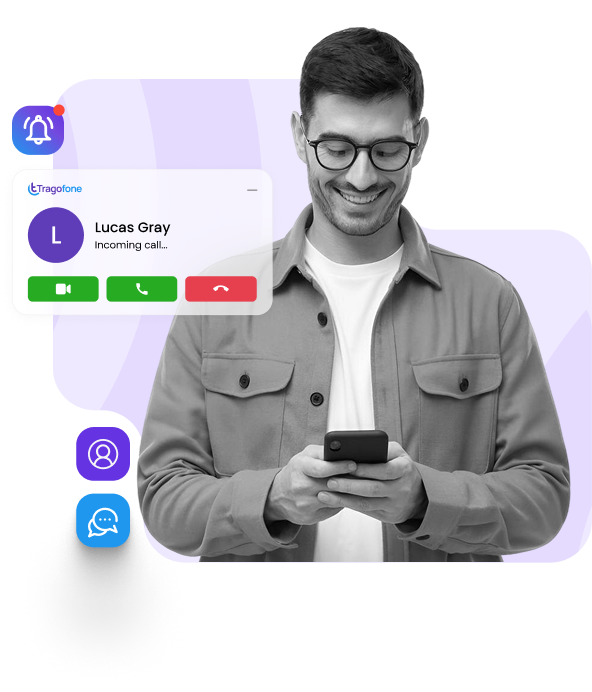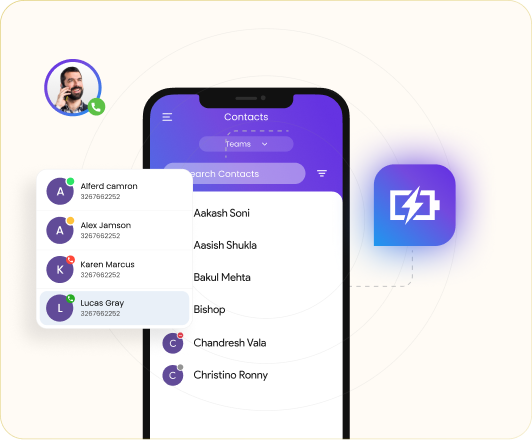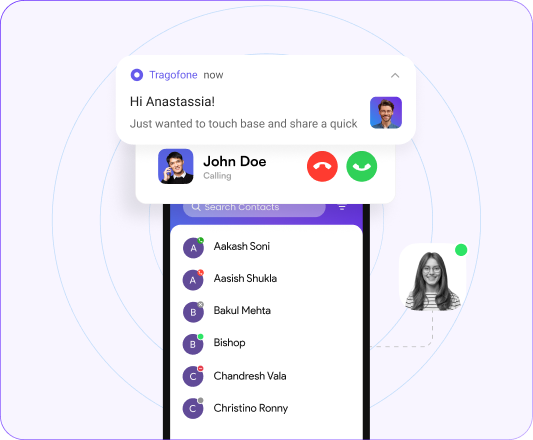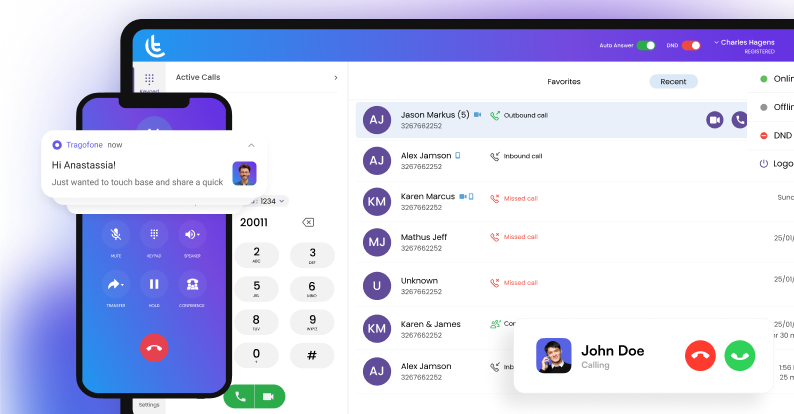Stay Connected, Even When the App is Closed
Tragofone push notifications make sure your team never misses a call, without draining battery or needing the app to stay open.


Push notifications let your softphone app know when there’s a new call or message without the app needing to stay open all the time.

They work by sending a quick signal from the server to your phone or computer. That wakes up the app so it can ring or alert you when something comes in.

This works on iPhone and Android devices. It helps users stay reachable without draining their battery or leaving the app running in the background.

Running your SIP app all the time eats up your battery. It’s always listening for calls or messages, which is a big energy drain.

Battery drains fast

You miss calls anyway

Calls get dropped or glitchy


A message box pops up with two buttons: "Accept" and "Reject"

A phone ringtone plays to alert you.

A message appears next to the app's icon, announcing the type of event like "Incoming Call" or "Text Message".
Tragofone uses APNS to send push notifications to iOS devices and Google FCM for Android phones.
The Tragofone app requests a device token from APNS or FCM.
The app receives the token. This token acts as the address where push notifications need to be sent.
The app securely shares this token with the Tragofone server. This happens when the app logs into the Tragofone server.
The user opens the app, then terminates it or puts it in the background.
When the Tragofone app receives a call, the Tragofone server sends an INVITE message to the contact address and also sends a push notification with the device token to APNS or FCM.
When the Tragofone app receives a call, the Tragofone server sends an INVITE message to the contact address and also sends a push notification with the device token to APNS or FCM.
The device receives the push notification and alerts the user about the incoming call. The user accepts the call.

Tragofone push notifications make sure your team never misses a call, without draining battery or needing the app to stay open.
